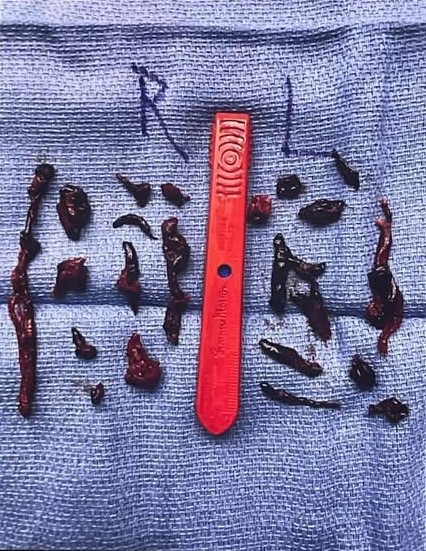Teen motocross champion overcomes life-threatening blood clots

In March 2023, 16-year-old Raihanna Hartley from Bruce, South Dakota, faced a life-threatening emergency when multiple blood clots traveled to her heart. Despite initial misdiagnosis and a journey through a blizzard to receive treatment, the amateur motocross rider not only survived but went on to win a women's championship just months after her recovery.
Early warning signs
"About a week before, I felt like I had a cold, and I started having shortness of breath. And I was throwing up and getting hot a lot," Raihanna says. A doctor prescribed an inhaler and ibuprofen, dismissing her symptoms as a possible cold or asthma.
However, her condition rapidly deteriorated.
"My bedroom is upstairs and just walking downstairs, I could not breathe, and it was painful," Raihanna says. During a blizzard, her mother attempted to take her to a chiropractor, thinking it might be a nerve issue. "I was crying and in pain. I looked at my mom and told her, 'Just take me to the hospital. It's something else.'"
Race against time
At the local emergency room in Brookings, Raihanna was found to have dangerously low oxygen levels. Because of the severity of her condition, she was immediately transferred to Nebraska Medical Center. While her mother accompanied her on the medical flight, her father had to drive through the heavy snow to join them in Omaha.
 Dr. Jonathan Thompson, the vascular surgeon who treated Raihanna, explains the gravity of her situation: "She had a large pulmonary embolism, which can be fatal in many people. Probably because she was young, her body was able to tolerate it, to at least allow her to be transferred for more definitive care."
Dr. Jonathan Thompson, the vascular surgeon who treated Raihanna, explains the gravity of her situation: "She had a large pulmonary embolism, which can be fatal in many people. Probably because she was young, her body was able to tolerate it, to at least allow her to be transferred for more definitive care."
Removing the clots
The Nebraska Medicine Pulmonary Embolism Response Team (PERT) quickly assembled to assess Raihanna's case. "She met all the criteria for having a severe pulmonary embolism," Dr. Thompson says. "She had an increased heart rate. Her blood pressure was low. She was requiring lots of oxygen."
Using a minimally invasive procedure called thrombectomy, doctors removed 16 clots through a small incision in her groin. "It’s a large-caliber device which allows us to suck the clot out," explains Dr. Thompson. "We were able to clear it within 90 minutes or less."
Amazing recovery
 Despite the procedure's intensity – Raihanna remained awake throughout due to her low oxygen levels – her recovery was swift. "Right when they did the procedure, I felt the relief, and I felt good," she says. Her father, Paul, adds, "By the following week, she was like nothing happened."
Despite the procedure's intensity – Raihanna remained awake throughout due to her low oxygen levels – her recovery was swift. "Right when they did the procedure, I felt the relief, and I felt good," she says. Her father, Paul, adds, "By the following week, she was like nothing happened."
The medical team discovered that Raihanna's blood clots were triggered by a reaction to birth control pills containing estrogen. This experience has changed how she approaches medication. "We have to watch what she takes, medicine-wise," Paul explains. "When she got hurt a couple of weeks ago, everybody's like 'Give her ibuprofen.' But she can't take that; we can only use Tylenol."
Back on the bike
Just months after her near-death experience, Raihanna returned to competitive motocross racing at a rally in Sturgis. She went on to compete in 18 races over two and a half months, ultimately claiming the women's championship.
Beyond her athletic achievements, Raihanna has shown resilience in other areas of her life. She completed her high school education a year early and has recently moved into an apartment with her brother while working overnight shifts to support her racing career.
Lessons learned
The experience has left both Raihanna and her family with important insights about advocating for one's health. "I would say, always get a second opinion," Raihanna advises. "When we went to Brookings, they kind of just shrugged it off as a cold, with the inhaler and ibuprofen, and they didn't look into what was really going on."
Dr. Thompson emphasizes the uniqueness of Raihanna's case: "She's doing marvelously...She's totally functional and back to 100% of where she was at, and maybe even beyond. Had she not undergone the thrombectomy, there's a good chance she would not be physically capable of doing what she loves, motocross.”







